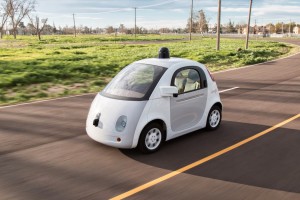
A fleet of 25 Google prototype autonomous vehicles will take to the streets of Mountain View, California, this summer for more testing.
That cute little self-driving Google car that looks more like one of the scrubbing bubble mascots than a car is moving from the test track to the real world this summer.
Google announced today that it would begin urban testing on its autonomous vehicles. Unlike the final product, these vehicles will come equipped with steering wheels, brake pedals and gas pedals. The final product is expect to come with just a button allowing the passengers to shut the vehicle off in case of an emergency.
While the test marks the first time the vehicles will be outside a controlled environment, only the residents of Mountain View, California, need to be concerned about the testing.
The 25 test cars will be limited to streets surrounding Google’s headquarters there, and top speed is capped at 25 mph. The testing comes as reports of accidents involving autonomous vehicles are coming to light.
Google has experienced 11 minor traffic accidents since it began researching autonomous vehicle technology six years ago, but in none of the crashes were the self-driving vehicles at fault, the tech giant said. All of the accidents were minor, involving “light damage, no injuries.
(Google acknowledges 11 autonomous vehicle crashes. For more, Click Here.)
Google isn’t exactly sending these vehicles into the traffic fray willy nilly. The software, camera, and sensors in Google’s autonomous car are the same as the ones used by its fleet of Lexus RX450h crossovers using Google’s autonomous technology.
(Click Here for our original report on the autonomous vehicle crashes.)
According to the company, the Lexus test vehicles have logged nearly a million miles over the past few years and with the testing in Mountain View, the company can tweak and improve its autonomous software.
(What’s it like to drive an autonomous, 70,000 pound truck? Click Here to find out.)
“We’re looking forward to learning how the community perceives and interacts with the vehicles, and to uncovering challenges that are unique to a fully self-driving vehicle—e.g., where it should stop if it can’t stop at its exact destination due to construction or congestion,” wrote Chris Urmson, director, Google Self-Driving Car Project, in a blog about the project today.

IMO this is a very bad decision considering the number of accidents they have already experienced in both manual and auto modes. Rushing this stuff on to the roadways is a good way to start some serious negligence lawsuits.